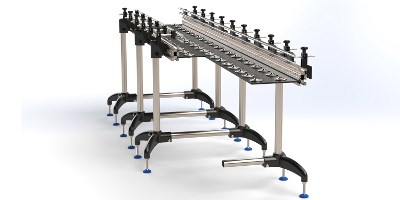For food and beverage manufacture, storage or preparation, hygiene is imperative. Work areas must necessarily come into direct contact with bacteria: door handles are designed for physical contact, castors and wheels are susceptible to risk at floor-level and conveyor components are likely to make contact during packaging.
As a result of these demands, stainless steel is frequently the answer: it’s robust, resistant to corrosion, being a clear marker of visible hygiene.
The most common type of stainless steel is Type 304, with a higher level of carbon which means it can withstand temperatures up to around 870°C, easily exceeding the tolerance required for food production. Containing up to 10.5% nickel and up to 20% chromium, this makes Type 304 stainless steel widely resistant to corrosion and free from rust.
Type 303 stainless steel has improved machinability, a benefit which comes into effect when very low tolerances are involved.
The premium level of durability and protection against corrosion is provided by Type 316 stainless steel, earns it the name ‘food grade’ and remains the first choice material for the food and beverage industry.


